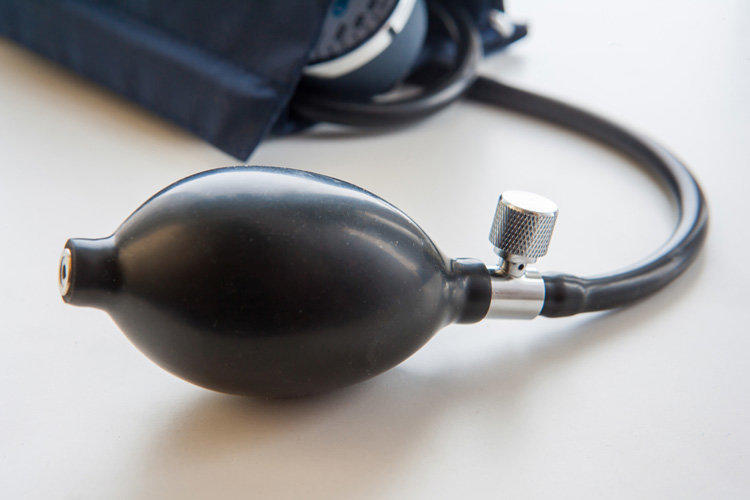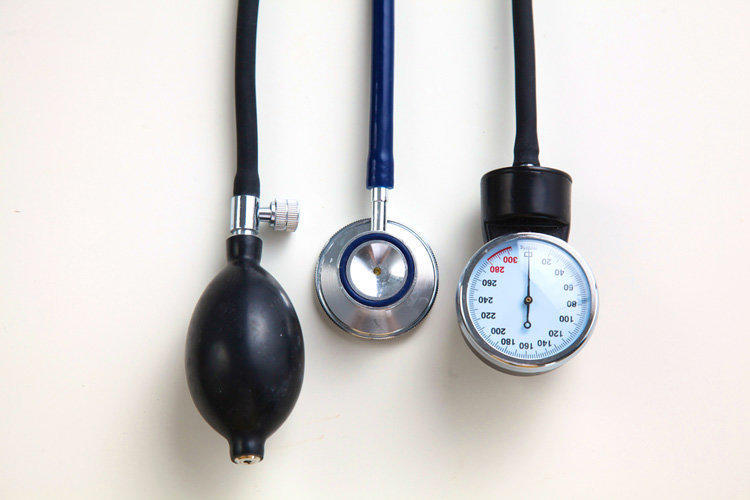Is a Systolic Blood Reading of 90 Normal
This indicator serves as a sign indicating the country of the trunk, and changes in pressure parameters provide information about possible diseases. Therefore, a person needs to be able to make up one's mind his pressure level and be aware of what his claret pressure should exist.
- What is blood pressure?
- What pressure can be considered normal?
- Blood force per unit area norm and alter of ideas about it
- How is blood pressure measured?
- Measurement Technique
- What is dangerously loftier and low blood pressure?
- Pressure norms by age
- Blood pressure norms for children and adolescents
- Blood pressure norms for adults
What is blood pressure?
As you know, blood in the body flows through the vessels – veins, capillaries, arteries. Blood pressure is the pressure produced by blood on the walls of blood vessels. It tin be of several types:
- Intracardiac
- Capillary
- Venous
- Arterial
The most important diagnostic is claret pressure. Therefore, henceforth, speaking of pressure level, nosotros will keep in heed precisely blood pressure level.
Pressure is created in the large arteries as a result of the contractile activity of the heart. It is because of the arterial pressure in the vessels that blood flows, and the tissues receive nutrients and oxygen.
The pressure is determined by two parameters – the values of systolic and diastolic pressure.

Systolic (or upper) claret pressure is created in the arteries during the greatest compression of the heart (systole). Diastolic (lower) pressure is noted during the greatest relaxation of the heart (diastole). Pressure historically taken to measure in millimeters of mercury. From the point of view of physics, it shows how many millimeters the pressure in the vessels exceeds the atmospheric pressure.
The parameter is written in two numbers. For example, a 134/70 pressure ways that the systolic force per unit area is 134 mm Hg and a diastolic pressure is 70 mm.
The difference between systolic and diastolic blood force per unit area is called pulse pressure.
What pressure can be considered normal?
This setting is not constant in dissimilar situations. Blood force per unit area tin can be afflicted by diverse circumstances. During concrete exertion and stress, the pressure rises, at the moments of rest and slumber – decreases. The normal value is measured at rest.
Also, a person's normal pressure does non remain abiding throughout his life. The lowest pressure in humans is observed in childhood, and with age it tends to increase. During hormonal surges – during adolescence, during pregnancy, blood pressure may likewise change. The charge per unit of pressure depends on the private characteristics of the organism of individuals, merely these variations are pocket-sized.
Blood force per unit area norm and change of ideas about it
Ideas most what should exist normal blood pressure at what age, have inverse over time. If three decades agone it was believed that the norm of claret pressure has a linear dependence on age and should gradually increase, now doctors believe that there is a sure value in a higher place which pressure level is considered dangerous at any age, even in one-time. Although no i rejects a certain connection between claret pressure and historic period. And in exercise, it is non like shooting fish in a barrel to detect an elderly person who has normal pressure. Therefore, increased pressure, for example, 150/90 for the elderly, tin can merely be chosen the norm conditionally.
High blood pressure, clearly related to the manifestations of pathology, is considered to be the value to a higher place 135/85. The magnitude of the force per unit area, greater 145/xc, is a symptom of hypertension.
Abnormally depression pressure, requiring the establishment of its causes and handling, for adults is considered a pressure level beneath 100/sixty. The optimal indicators of blood force per unit area for adults are in the range 110/65 – 120/75. A pulse force per unit area of more than 55 mm and less than thirty mm is too usually a sign of pathology.
It should exist noted that parameters such every bit pressure and pulse practice not have a directly relationship. A rapid pulse (tachycardia) may not e'er indicate hypertension, and a rare (bradycardia) indicates a reduced pressure. Moreover, sometimes with a subtract in blood force per unit area, the pulse can increase – due to the fact that the trunk will tend to compensate for the lack of blood circulation, and vice versa. In order to make up one's mind the pressure, information technology is necessary to measure it.

How is blood pressure level measured?
In medical exercise, blood pressure in the arteries of the arm is most frequently used. To date, special devices – tonometers are used to determine blood pressure. As a rule, they are cheap and accessible to the general public.
At that place are three primary types of tonometers:
- Manual
- Semi-automated
- Automatic
Also tonometers can be analog and digital. Most modern semi-automatic and automatic pressure gauges are digital. Manual tonometers are somewhat cheaper, just require certain skills to work with them, so they are not very suitable for the average person.
What is the principle of the tonometer? The procedure for measuring pressure level looks like this. A cuff wraps around the shoulder, into which air is pumped. Then he gradually released. The Korotkov method is used to determine pressure values. Information technology consists in fixing racket arising in the arteries at a time when the force per unit area changes. The gage pressure, which coincides with the commencement of the noise, corresponds to the arterial systolic pressure level, and the force per unit area, which coincides with the end of the noise, corresponds to the diastolic pressure level.
In manual manometers, a stethoscope is used to determine the beginning and cease of noise, the headphones of which are inserted into the measuring ears. The air is pumped into the cuff manually with a pear.
In automatic and semi-automatic pressure gauges, the pulse and pressure level are fixed automatically. The difference between semi-automatic and automated devices, however, is that in automatic air is pumped into the gage by the motor, and in semi-automated, a pear is used for this.
There are too tonometers that measure pressure on the wrist. They are smaller and more comfortable, simply less authentic and non suitable for all patients (for case, elderly).
The force per unit area measurement results on digital tonometers are ordinarily displayed in the class of 3 numbers, for case, 120 – 70 – 58. This ways that the systolic pressure level is 120 mm, the diastolic pressure level is 70, and the pulse rate is 58 beats per infinitesimal.
Measurement Technique
Pressure using a pressure level gauge is measured in a sitting position. Before measuring, information technology is necessary to sit at balance for several minutes. Also, before the process is not recommended to beverage coffee, alcohol, practice. The room should not be as well warm or cold.
The middle of the shoulder, on which the cuff is applied, should be approximately at the aforementioned level every bit the chest. It is best to put your mitt on the table. It is non recommended to put a cuff on the sleeve of wearing apparel, move your mitt during the measurement.
When using a semi-automatic or manual manometer, the pear must be pumped evenly, non too slowly and not too speedily. For automatic manometers of one measurement, every bit a rule, it is non enough, since automation tin exist mistaken and bear witness an wrong result. It is recommended to accept three measurements on different easily and choose an average value. Between two measurements on one manus, you must pause for a few minutes and then that the vessels render to their normal country.
Usually the pressure on the right arm is slightly higher due to the more developed muscles on it. But if this departure is significant – more than 10 mm, then this may signal pathology.
Should take into account the and so-chosen "white coat outcome." It is expressed in the fact that many people, especially nervous and suspicious, in a doctor's office are under astringent stress. In such a situation, the person increases the force per unit area when measured on an outpatient basis. Therefore, information technology is preferable to measure the pressure at home in a familiar and pleasant environment.
Elderly people and people suffering from cardiovascular diseases, hypertension, vegetative-vascular dystonia, diabetes, pressure should be measured twice a day – in the morning and evening. This makes it possible to avoid pressure-critical increases in health.
In that location are too devices that can measure pressure for a long time, for example, during the day. They are mounted on the patient's body. The monitoring conducted with their assistance gives more than consummate data well-nigh the dynamics of pressure level and how it changes depending on the time of solar day and the nature of human activity.
What is dangerously loftier and low blood pressure?
During physical exertion and stress, the pressure may increase for a while. This phenomenon is considered normal and is caused past the release into the claret of a vasoconstricting hormone – adrenaline. However, at rest, the pressure should return to normal. If this does not happen, then this is a reason to audio the alarm.
Constantly elevated pressure is the master symptom of hypertension. High pressure level leads to decreased operation, fatigue, shortness of breath, pain in the heart, worsened sleep, an increased likelihood of haemorrhage. But the worst thing is that it significantly increases the risk of such serious diseases as heart attack and stroke.
Often can observe the opposite phenomenon – constantly reduced force per unit area (hypotension). This status is not every bit unsafe equally hypertension, but also does non bode well. When hypotension deteriorates the blood supply to the tissues, which may entail a weakening of immunity and other diseases, the risk of syncope and CNS disorders increases.

Pressure norms by age
Pressure in children and adolescents is ordinarily slightly lower than in adults, but at the age of 12, it is close to adult values.
Claret pressure norms for children and adolescents
| Age | Pressure level |
| upwards to 2 weeks | ninety-45 |
| 3-4 weeks | 105-65 |
| 2 months – a yr | 105-65 |
| 2-three years | 100-70 |
| 3-5 years | 110-threescore |
| 6-10 years | 115-seventy |
| Over 10 years | 120-seventy |
Blood pressure norms for adults
| Age | Men | Women |
| 20 years | 120 – 80 | 110 – 80 |
| 30 years | 125 – 80 | 120 – 75 |
| 40 years | 130 – lxxx | 130 – lxx |
| l years | 135 – 83 | 135 – 84 |
| threescore-65 years old | 135 – 85 | 135 – 85 |
| Over 65 | 135 – 89 | 135 – 89 |
If yous discover that the pressure in you or your kid is constantly exterior the limits specified for the age group (no matter whether information technology is systolic pressure, diastolic pressure, or both), then this is a reason for going to the doctor. It should also be borne in listen that some comorbidities, such as diabetes or ischemia, make even moderately high blood pressure dangerous.
Pressure may be higher than normal for various reasons:
- cardiovascular diseases
- elevated blood cholesterol
- kidney disease
- neurosis
- stress
- endocrine diseases
- osteochondrosis
- sedentary
- extra weight
- bad habits – smoking, alcohol
- pregnancy
- vascular dystonia
Depression blood pressure can as well have various causes:
- bleeding
- middle failure
- dehydration
- vitamin deficiency
- endocrine diseases
- overwork
- hypoglycemia
- vascular dystonia
Source: https://doc-said.com/articles/good-to-know/what-is-normal-blood-pressure-for-a-person/
0 Response to "Is a Systolic Blood Reading of 90 Normal"
Post a Comment